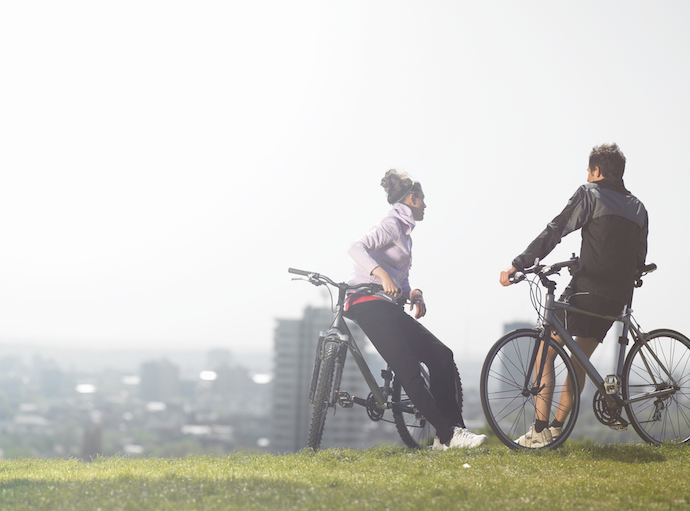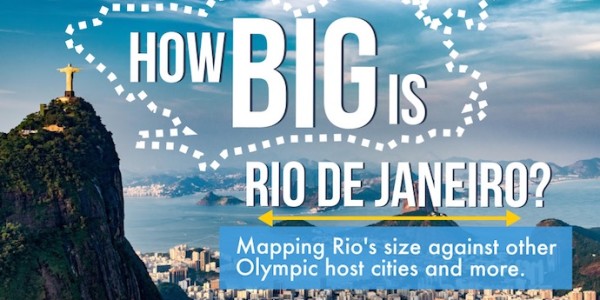If you’re a person who likes to bike to work or take your kids for a weekend bicycle ride, there’s no better time to find a town that strives to keep cyclists safe.
City governments are learning that bike-friendly communities are healthier and offer a high quality of life, said Bill Nesper, director of programming for The League of America Bicyclists.
“Communities are creating bike networks for all ages and abilities by giving them safe and comfortable places to ride,” Nesper said.
Here are 10 U.S. cities where bicycling is a viable transportation alternative:
New York, NY
Good morning riders of NYC #bikelife #bike #newyorker #newyorkcity #rapha #raphacyclingclub #raphawomen @raphacycle… pic.twitter.com/ho3jMWtMEo
— Isabella (@isabelladelc_) May 19, 2016
New York, where biking to your destination can often be faster than sitting in congested traffic or battling packed subways, topped Bicycling Magazine’s 2014 list of the 50 most bike-friendly cities.
New York has more than 350 miles of bike lanes, many barricaded from traffic by concrete and parking lanes “to encourage even casual cyclists to ride up Broadway and through a car-free Times Square,” according to Bicycling. New York also has Citi Bike, a bike-sharing program for short-term bike rentals with 8,000 bikes and 500 stations.
Minneapolis, MN
Bicycle Babes of the Day…
Yasmin and Deko of the Wellstone Bike Club. #Minneapolis @SF_Transit_News @marinbikes pic.twitter.com/ZZoOl6RKUp
— DJ Rubiconski (@Rubiconski) April 19, 2016
The “Mini Apple” of the Midwest is America’s most bike-friendly city, according to a 2015 ranking of American cities compiled by Walk Score, a real estate website. Minneapolis was also the only U.S. city to appear in the 2015 index of best cities for urban cycling ranked by Copenhagenize Design Company, an urban planning company in Denmark. Minneapolis offers a bike-sharing program and more than 213 miles of protected bikeways, lanes, shared lanes and bike boulevards. The city plans to increase that number to 403 miles by 2020, according to the its Bicycle Master Plan.
Chicago, IL
Via @timmyjs: Love riding a bike in the city? #Chicago #summer #sunshine #CityBoy #bicycle… https://t.co/AVfWhCKgwk pic.twitter.com/wJNS4Rzfq6
— InstaBicycle (@InstaBicycle) June 6, 2016
The windy city ranked number two on Bicycling Magazine’s 2014 list, thanks in part to Chicago’s $60 million Navy Pier Flyover project, a 16-foot-wide elevated path for pedestrians and cyclists above congested car traffic along the 18.5-mile Lakefront Trail near Navy Pier to be completed by 2018. Chicago — where drivers pay a $1,000 fine for “dooring” collisions caused by people flinging car doors open into unsuspecting bikers – plans to ramp up its bike-friendliness even more with The Chicago Streets for Cycling Plan 2020, which aims for a 645-mile network of on-street bikeways by 2020.
Portland, OR
Spring fever dog ride #helmetography #cycling #quaxing #cargobike #Bicycle #citycycling #Portland pic.twitter.com/ghhiFsbB7g
— Aixe Djelal (@aixedjelal) April 20, 2016
A seamless bicycle network connects all parts of Portland. Portland’s Bicycle Plan for 2030 calls for a cohesive network of low-stress bikeways where residents who don’t bike regularly will ride more often if they feel safe from automobile traffic. The city will also expand its current 630 miles of planned bikeways to 962 miles by 2030. There’s also BIKETOWN, Portland’s public bike-rental system.
Boulder, CO
.@jpapasso pix of flying rider at Valmont Bike Park @bikevalmont in #boulder#mtb #bike #mountainbike #BMX pic.twitter.com/GX0gLp50rT
— Paul Aiken (@PaulAikenBDC) March 3, 2016
More than 12 percent of Boulder’s 105,000 residents commute by bike, according to The League of American Bicyclists. The city has 300 miles of dedicated bikeways, and approximately 95 percent of Boulder’s arterial streets have bike lanes or trails. You’ll find navigational assistance and turn-by-turn biking routes for Boulder at GoBikeBoulder.net. For mountain bikers, there’s Boulder’s Valmont Bike Park, a 42-acre, natural surface cycling terrain park for all skill levels.
Madison, WI
Tom Ryan of Madison guides his #bicycle along South Park Street in the city as a heavy sno… https://t.co/yshBYKJSFB pic.twitter.com/aYG5OjSOv4
— madison.com (@madisondotcom) February 2, 2016
Around 8 percent of Madison residents 18 and older use a bike as their primary mode of transportation, according to the city’s Regional Transportation Plan 2030. The city’s Bike Madison web page offers an interactive map of Madison’s bicycling network that displays locations of all restrooms, drinking fountains, bike-sharing stations and bike shops along the routes. Madison currently has 114 miles of shared roadways or multi-use paths designated as preferred bicycle routes, 42 miles of bike paths and trails and 47 miles of bike lanes and paved shoulders.
San Francisco, CA
Enjoy my freshly built Pegoretti bicycle at the top of Hawk Hill. pic.twitter.com/bSf27ZfwpO
— Dave Rosenberg (@dr138) April 18, 2016
Bicycling Magazine ranked San Francisco at number 7 in its 2014 bike-friendly cities list. In San Francisco, taxi and bus drivers undergo mandatory education on sharing the road with cyclists. You’ll find bike events and rides like the San Francisco Bike Party, a monthly celebration of all levels of biking with routes exploring the city. Serious bikers can cycle up Hawk Hill, a 25-mile, rigorous ride with a total ascent of 2,100 feet and spectacular views of San Francisco and the Golden Gate Bridge.
Davis, CA
In most US cities, bicycle modeshare struggles to reach 2%. In Davis, CA, it’s 10 times that. http://t.co/qm2zsJelax pic.twitter.com/2mtBxcWjbk
— Rails-to-Trails (@railstotrails) August 9, 2015
The concept of bike lanes in the U.S. originated in this town located an hour northeast of San Francisco back in 1967 with just a few blocks of bike lanes. Davis’ bicycle network now consists of more than 100 miles of bicycle lanes and dedicated bike paths in a town that’s only about 10 square miles in size. In this city of 321,000 people, 22 percent of residents commute by bicycle, according to the city website.
Denver, CO
#Denver wins Silver Level #Bicycle Friendly Community #Award, from League of #American Bicyclist. pic.twitter.com/N2G9FWsZjE
— Alan Stedman (@AlanStedman7) June 10, 2015
Bicycling Magazine ranked Denver number 12 in its top 50 partly because of the city’s downtown 15th Street protected bikeway, which greatly reduced dangerous sidewalk riding. In December, Denver opened two additional mile-long, protected bike lanes downtown that utilize a row of parked cars to separate bike from vehicle traffic. Nearly 7 percent of downtown commuters ride their bikes to work, and Denver currently has three miles of protected bike lanes and 124 miles of bike lanes citywide, according to Denver’s Public Works Department.
Indianapolis, IN
Great tour of the Indianapolis Cultural Trail @INCulturalTrail @SustainIndy @IndyDPW pic.twitter.com/Ikc4rQ9fCb
— Chris Merritt (@chrisdmerritt) June 6, 2016
Indy ranked number 25 on Bicycling Magazine’s top 50 list, thanks to bike-share stations and the city’s 8-mile-long Cultural Trail, a protected bikeway that circles downtown and connects cultural districts and a 40-mile regional trail system. In the last five years, Indianapolis added around 80 miles of new bike lanes and trails. Indianapolis is also part of Green Lane Project 2.0, a program to add protected bike lanes by using planters, curbs, parked cars or posts to separate bike and auto traffic on busy streets.





